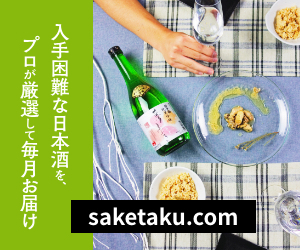- Home
- [Beginning of Sake] - Let's learn more about Sake!
- 7. Sake is fun with sake sets! Explaining the characteristics of typical ingredients and how to choose them!!
7. Sake is fun with sake sets! Explaining the characteristics of typical ingredients and how to choose them!!
- 2021/8/12


In the previous article, “The taste of sake changes with temperature! Introducing how to cool and warm sake to drink deliciously!” , I explained the “temperature” when drinking sake.
In this article, I will introduce the “sake set” that is indispensable when drinking sake.
When you drink sake, you need a “sake set for pouring” and a “sake set for drinking”.
Usually, you see sake set in the shops, such as “Choko(small cup for sake)”, glass, “Tookuri (sake bottle)” and “Katakuchi (single-ended bowl)”, but is also used a variety of vessel to the other.
Therefore, this time, I will explain the typical materials, features, and selection methods of sake sets.
If you understand sake sets, you will be able to enjoy sake more.
Contents
To enjoy sake, stick to the sake set
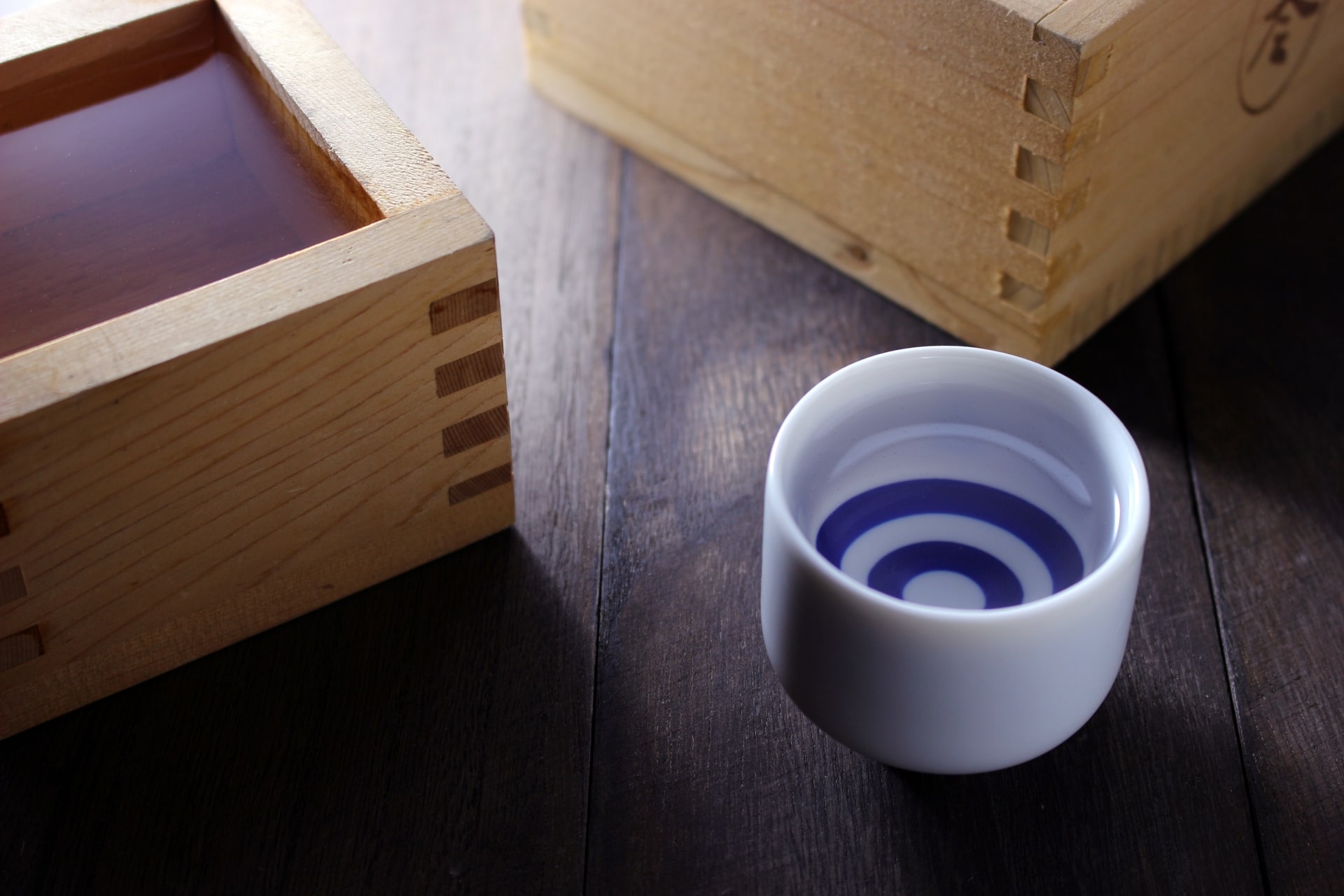
A “sake set” is indispensable when drinking sake.
There are two types of sake sets: sake sets for “drinking” such as sake cups and glasses, and sake sets for “pouring” such as sake bottles and one-sided sake cups.
There are many types of sake set materials, sizes, and shapes, each with different characteristics.
Sake set changes the feeling of “color”, “aroma”, “taste”, “drinking” of sake.
If the material of the vessel changes, the feeling when it is applied to the lips will changes. When the shape changes, the aroma and taste change.
Also, if the color of the vessel changes, the impression of sake will also change.
We feel tastes of food and alcohol are not just with tastes sense, but with all five senses.
In order to taste sake better, sake sets related to senses other than taste are indispensable.
Material of sake set
Below is a summary of the materials used for sake sets.
[List of materials used for sake sets]
| Made of earth | Clay | Pottery (※) |
| Clay containing feldspar, etc. | Stoneware (※) | |
| Made of stone | Mainly pottery stone | Porcelain(※) |
| Made of glass | Soda glass, crystal glass, etc. | |
| Wooden | Cedar, cypress, bamboo, lacquer (lacquerware), etc. | |
| Metallic | Gold, silver, tin, titanium, etc. | |
| Others | Plastic, silicon, etc. | |
(*) “Porcelain,” “stoneware,” and “porcelain” are sometimes collectively referred to as “porcelain.”
First of all, let’s know what kind of material is used for “drinking” and “pouring” sake sets.
Earthen sake set (including clay, feldspar, etc.)
It can be divided into “pottery” and “stoneware”.
Pottery
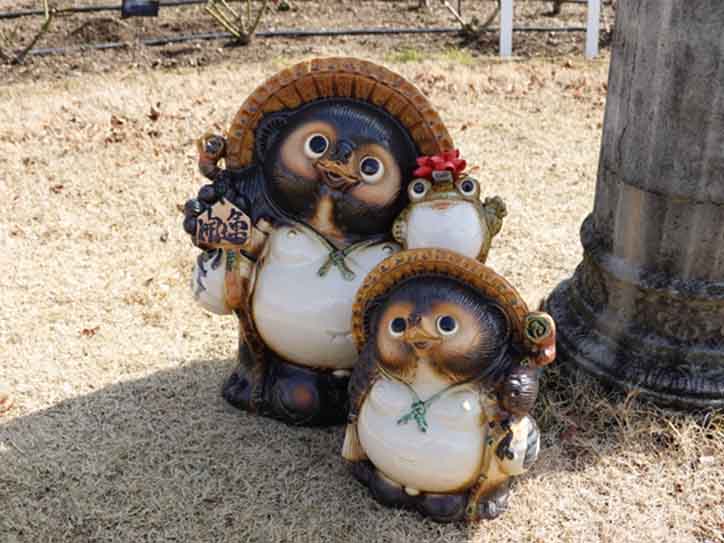
Pottery is made from clay, smoothed on the surface, and then glazed to prevent liquids and gases from seeping into it.
Typical examples of pottery include “Seto ware“, which is the origin of “Seto mono”, which is used as a general noun for ceramics in Japanese, and “Shigaraki ware“, which is famous for its raccoon dog figurines.
The characteristics of pottery are as follows.
[Characteristics of pottery]
- Has water absorption
- There is thickness
- Soft texture
- Warm impression
Stoneware
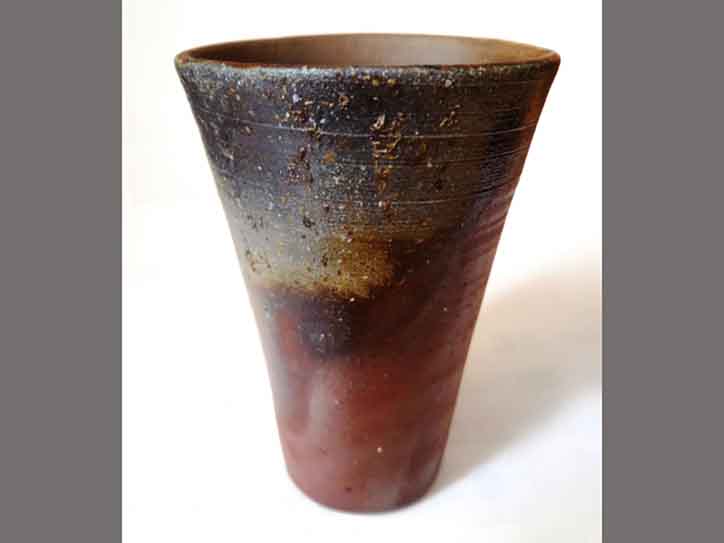
It is made from clay containing feldspar, and some are made with glaze, while others are baked without it.
The difference from “pottery” is not only the difference in material. Those that do not have translucency (the property of allowing light to pass through but cannot see the other side of the material because the light is diffused when passing through) and water absorption (the property of absorbing water into the material) “Stoneware”, which is not translucent but has water absorption, is classified as “pottery”.
“Bizen ware” is one of the most famous stoneware.
The features are as follows.
[Characteristics of stoneware]
- Has water absorption
- There is thickness
- The texture is hard (it makes a high sound when tapped lightly)
- Simple impression
Stone sake set (including pottery stone)
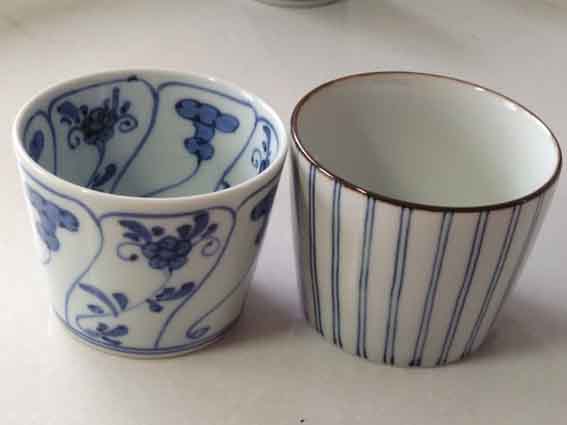
Sake sets made from stone powder and clay-based pottery stone are called “porcelain“.
To make it, first make a rough shape of potter’s wheel using “potter’s wheel” or “spatula”, dry it, and then decorate it.
After that, unglazed once, glazed, and then baked at high temperature.
Finally, paint and bake again to complete.
A typical example is a bluish and glossy vessel called “celadon“.
Also famous are those with patterns such as “Arita porcelain” and “Kutani ware“.
The features are as follows.
[Characteristics of porcelain]
- No water absorption
- The texture is hard (the hardest of all ceramics, and when you play it lightly, it makes a metallic sound)
- Smooth surface
- Cool impression
Basically, it has the opposite characteristics of pottery.
You may remembered that what was painted colorless glaze in white matrix among the porcelain “white porcelain“, what appears to be light blue there is a blue “blue-white porcelain“.
Glass sake set
Glass is made by melting silica sand (keisha, shining grains in the sand), soda ash (sodium carbonate), and limestone taken from stone or sand in a kiln at 1,500 °C and shaping it…
The features are as follows.
[Characteristics of glass sake set]
- You can see the inside
- No water absorption
- The texture is hard
- Cool / Cool impression
Glass is divided into light and hard “soda glass“, soft and heavy “crystal glass“, and light and hard and heat resistant “borosilicate glass“.
Speaking of glass liquor, there are typical glasses for each liquor such as beer glass, beer mug, and wine glass. In recent years, glasses exclusively for sake have also appeared.
In addition, “Kiriko” is famous as a glass sake set other than glass.
It has a gorgeous appearance and has been loved in Japan for a long time.
This will be explained in detail later.
Wooden sake set
“Wooden sake set” is a sake set made from plants such as cedar, cypress, and bamboo.
Among them, wooden products coated with lacquer are called “lacquer ware“.
Lacquer ware is a craft made in various parts of Asia, but Japanese lacquer ware was especially touted in Europe.
The counterfeit product is so representative of Japanese industrial products that there is an episode that it was called “Japan”.
The characteristics of wooden sake sets are as follows.
[Characteristics of wooden sake set]
- • Light
- • Has water absorption
- • There is a scent of the material
- • Very soft texture
- • Warm impression
Typical wooden sake sets include “Wajima-nuri” on the Noto Peninsula in Ishikawa Prefecture and “Kyo-lacquerware” in Kyoto Prefecture, which is famous for its lacquer work.
Metal sake set
A sake set made of gold, silver, tin and titanium.
For sake, many are made of tin or titanium rather than gold or silver.
It seems that tin and titanium are metals that do not have a metallic odor at all.
In addition, there is a theory that metals absorb impurities with a high ionic effect and soften the taste of sake.
The features are as follows.
[Characteristics of metal sake set]
- • There is a feeling of weight
- • Excellent heat conduction
- • Less corrosion
- • There is a cool / cold impression
- • Expensive
Typical metal sake sets include “Tokyo silverware” in Tokyo and “Osaka Naniwa tinware” in Osaka prefecture.
Others
In addition to the materials introduced so far, there are other types of sake sets that use plastic, silicon, or acrylic.
Its features include being light, hard to break, and relatively inexpensive.
Sake set for “drinking” sake
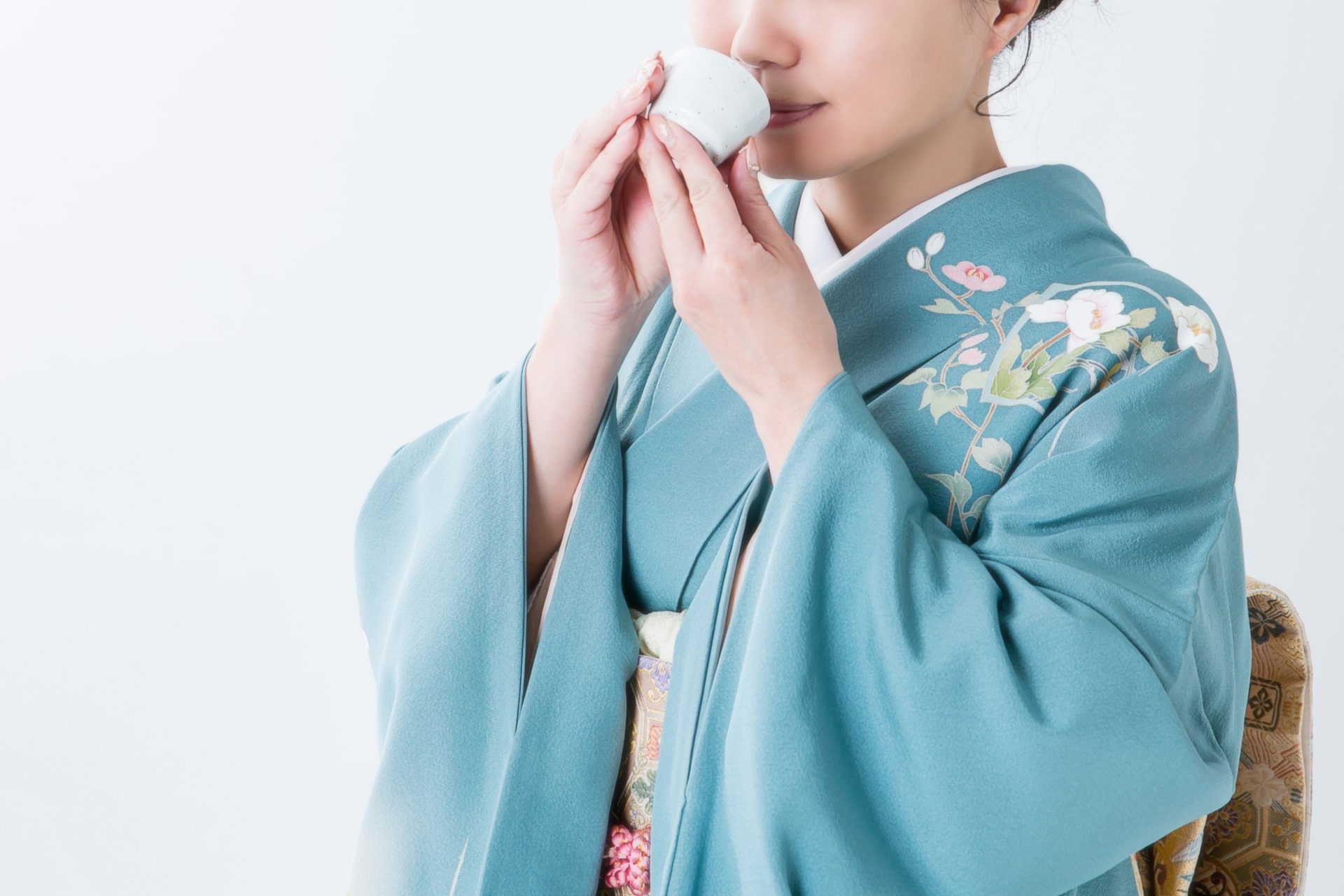
Next, I would like to introduce a sake set made mainly for Inoguchi to “drink” sake.
These sake cups for drinking are called “Sakazuki” or “Sakazuki”.
Choko
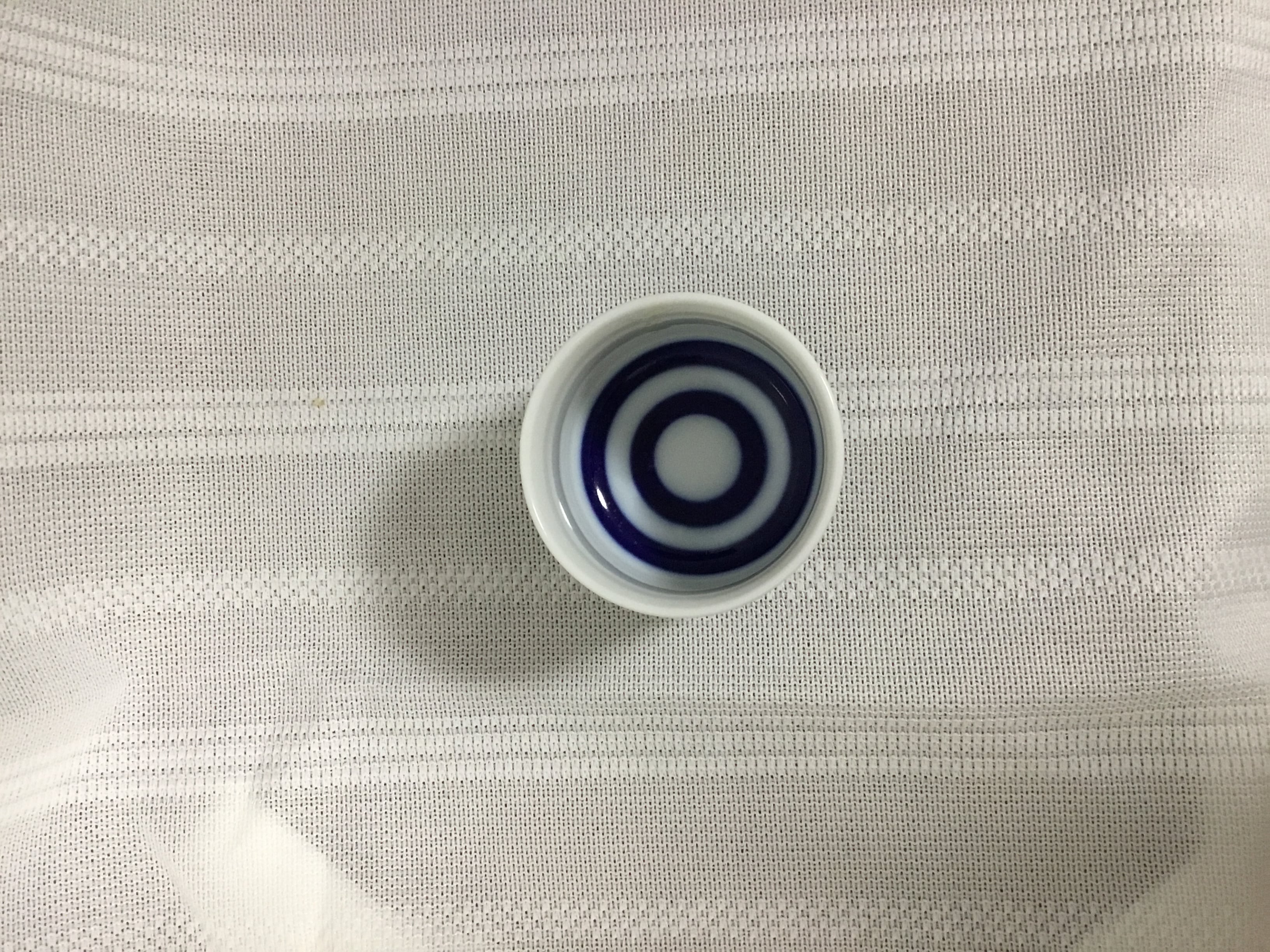
The small sake set used when drinking sake is called “Choco” .
It is said that the origin of the name is changed to “choku”, which indicates “a little thing” or “easiness”.
Choko has been used mainly for drinking sake, so it is often bundled with sake bottles.
There are a wide variety of Choko, such as pottery, porcelain, glass, wood, and metal, which we have introduced so far.
Its shape, a diameter of the aperture and the bottom is the same, is the variety, such as different things. Among them, the shallow and wide shape called “Hirahai” has been favored for sake.
Choko is characterized by the way it tastes differently depending on the size and thickness of the caliber.
For example, a straight, short choko may be difficult to smell.
In addition, some of the Choko are used by brewers for tasting.
There is a dark blue concentric circle pattern (crowd dots) at the bottom of the Choko. This is to make it easier to determine the tint of sake is for .
This Choko was originally used by the judges of the National New Sake Appraisal Committee. It came to be used by brewers, and the image as a sake set used by people who understand the taste of sake has taken root. Therefore, it seems that it has come to be used in restaurants to appeal the uniqueness of sake and its commitment to sake.
Guinomi
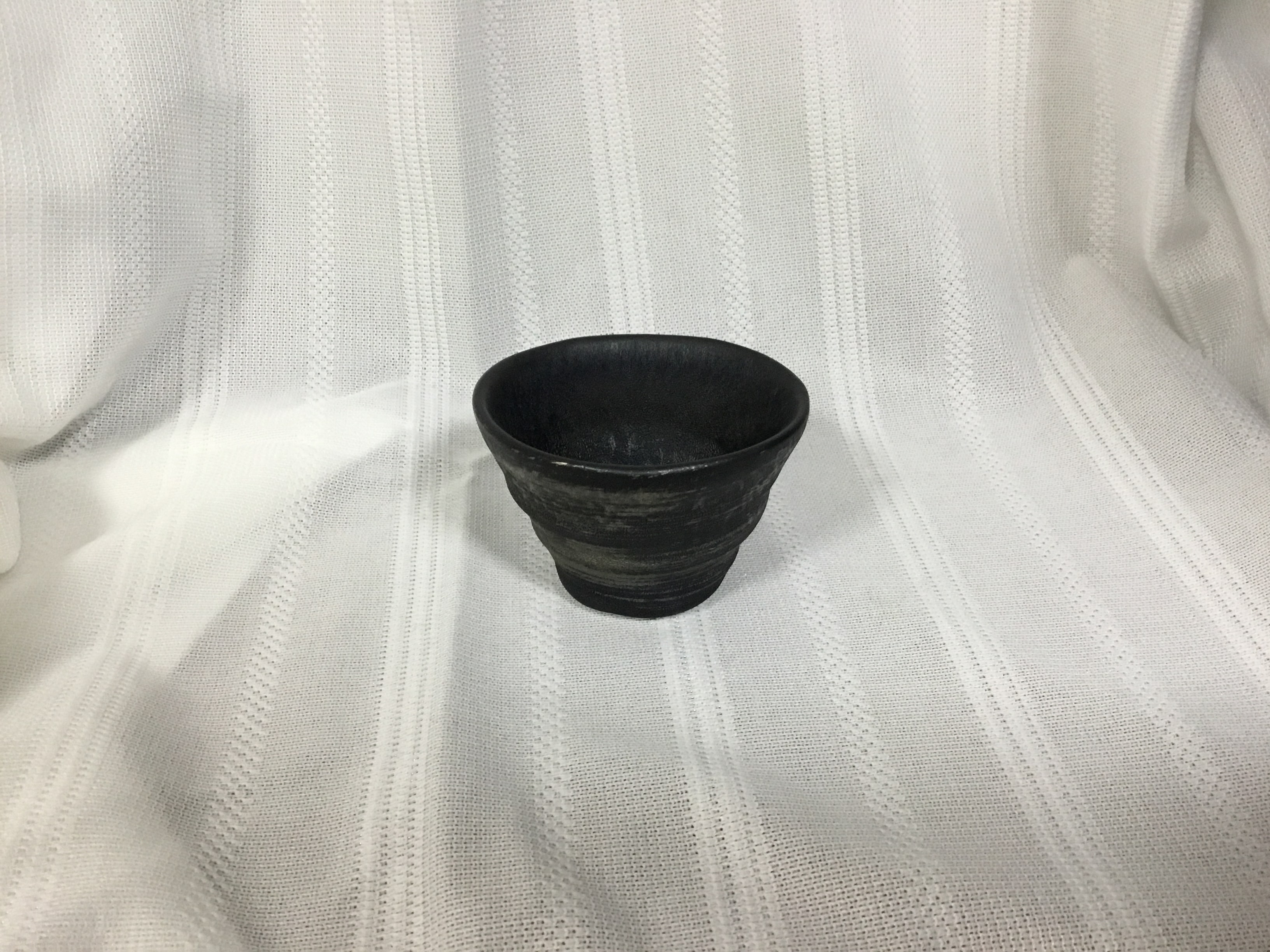
Guinomi is a sake set for “drinking” that resembles an choko.
A clear distinction between choko, the size said to be.
By the way, the characteristic name called “Guinomi” is derived from “Gui-Gui-Drink (drinking and drinking)”.
Masu
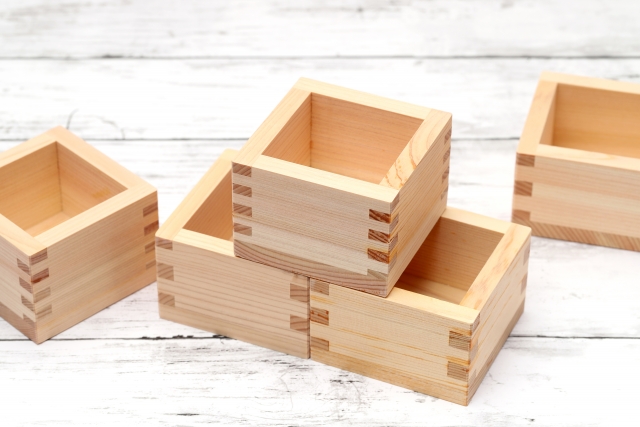
Masu is a square bowl made to measure the amount of liquids and grains in Japan.
Since it is a sake set made of wood, it has a strong scent of wood.
Until the Edo period, it was a very important vessel used to calculate the amount of rice to be paid as an annual tribute, which is a tax.
It was illegal to make or use non-standard boxes, and the offender was sentenced to death.
For that reason, most of the Masu shapes are cubic.
Here, we introduce as Liquor to drink the square, originally as described above with a metering device to. Basically, it is not made for drinking alcohol.
Therefore, when you drink sake in a Masu, the mouth is straight and it is a little difficult to drink.
How to drink called “Mokkiri”

At present, speaking of drinking sake in the squares in restaurants, there is a way to drink that, put glass in the square, poured sake in front of the eyes, to overflow from the glass.
This way of drinking is called “Mokkiri“.
Nowadays, it may be more often called “Masu-sake”.
The drinking is began to be used from around later 1950. It became very popular because it can be drunk more than the capacity of the glass.
The name “Mokkiri” comes from “Mori-kiri (just putting sake or rice in a container and there is no substitute)”.
However, in recent years, it has become a method of serving that can be found in izakaya, etc., which emphasizes cheapness, because it is difficult to hold a glass, sake sticks to your hands and table, and it is difficult to drink.
Glass
A sake set that uses glass as a material.
In many cases, it is made with particular attention to the caliber and shape so that the characteristics of sake can be brought out.
Basically, glasses are often used when drinking wine or brandy, and there is no standard glass for sake.
For this reason, recently, glass makers have begun to make unique products such as those for Daiginjo and Junmaishu that have been devised to bring out the characteristics of sake.
Kiriko
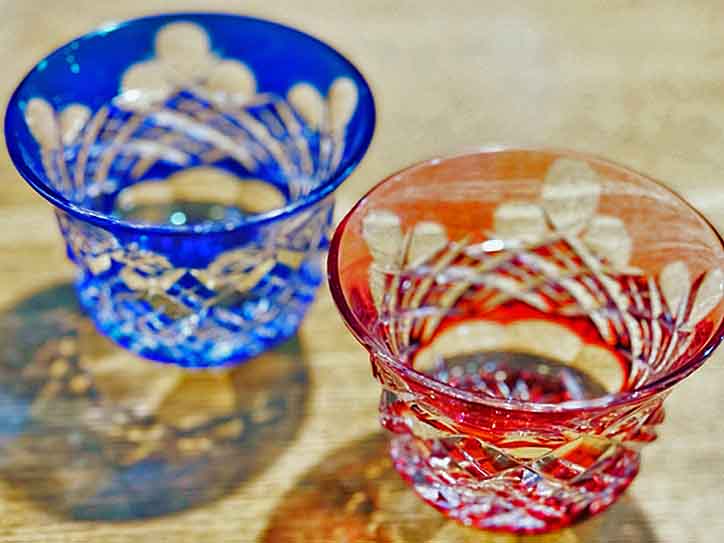
Kiriko is originally a technique for cutting the surface of glass. In turn, it also refers to glass products that have been subjected to such technology.
It is mainly developed for sake ware, and is famous for “Satsuma Kiriko” in Kagoshima and “Edo Kiriko” in Tokyo.
Both have a distinctive appearance. Since Satsuma Kiriko was mainly made for the appreciation of daimyo, it gives the impression that the colored layers are thick and profound.
On the other hand, Edo Kiriko has a thin colored layer and has a gorgeous impression.
Sake set for “pouring” sake
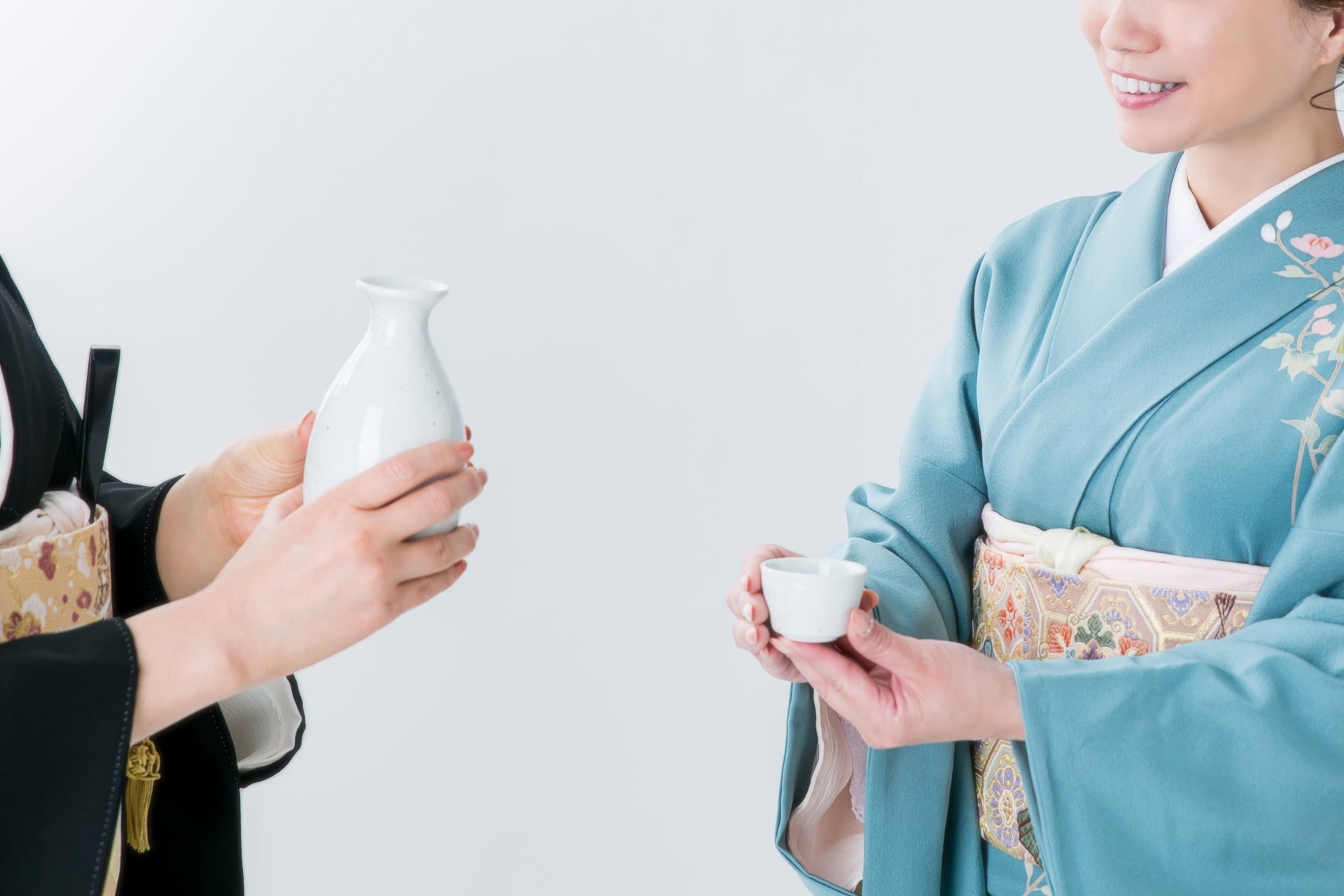
Next, I would like to introduce a sake set for “pouring” sake.
The famous “pouring” sake sets are “Tokkuri” and “Katakuchi”, but there are others.
Choshi
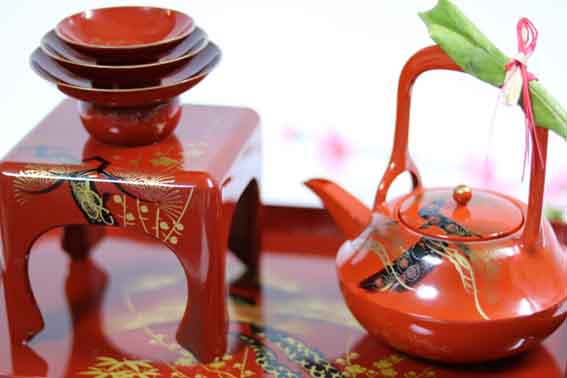
“Choshi” is a sake set that has been used since ancient times in Japan.
Shinto rituals, San-san-ku-do (three times drinking sake in three sips), and festivals have been used.
It features a spout and a long handle.
Tokkuri
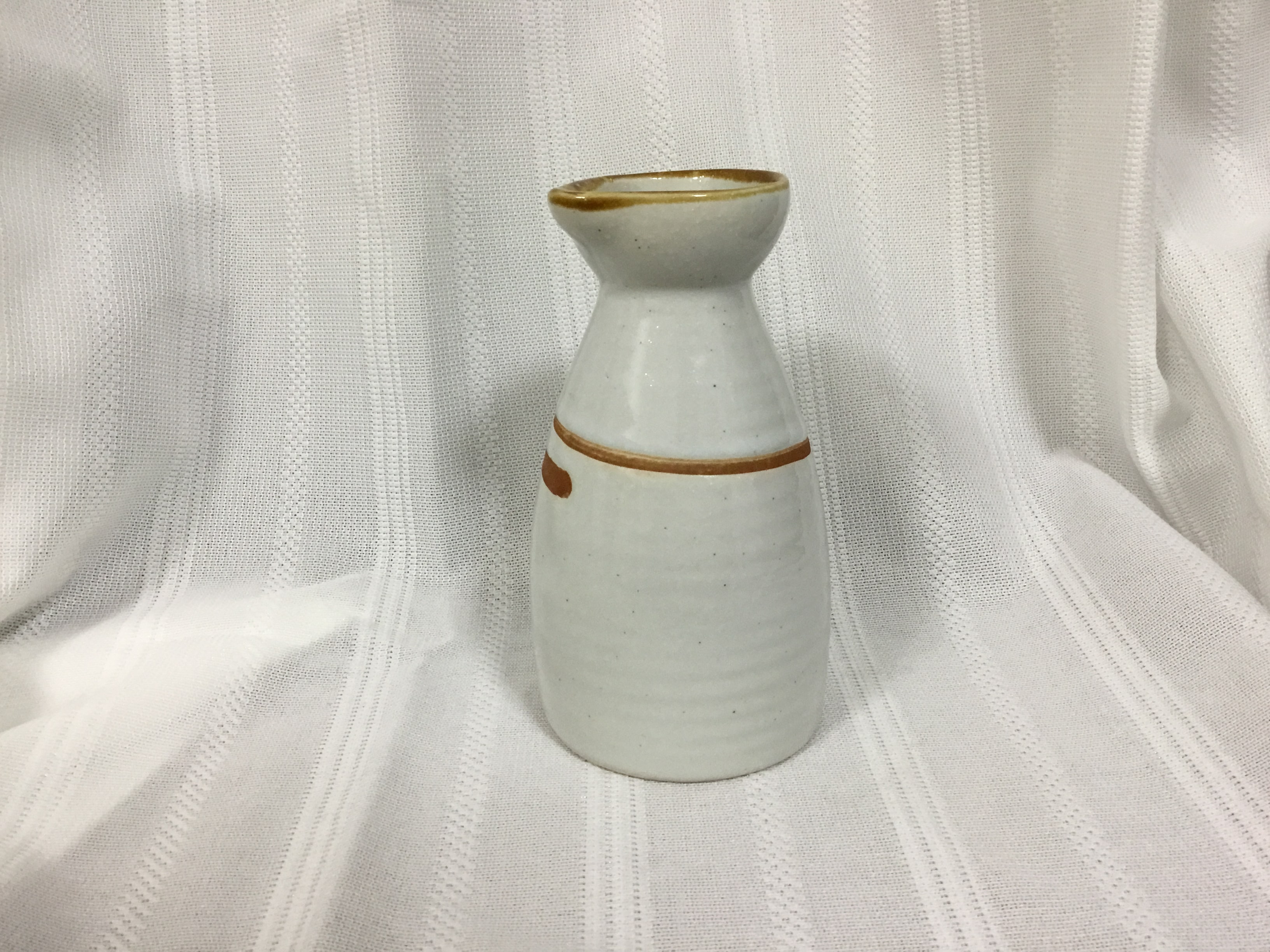
Tokkuri is a sake set that has been popular since the beginning of the Edo period.
Originally, pottery jars that store soy sauce and vinegar were called Tokkuri.
In times common people became enable to buy and drink sake, since it was on easy use than Choshi, and shape to warm sake in on hot water, it began to be used “to pour”.
Nowadays, Choshi and Tokkuri are often used as synonyms, but they were originally different containers.
Katakuchi
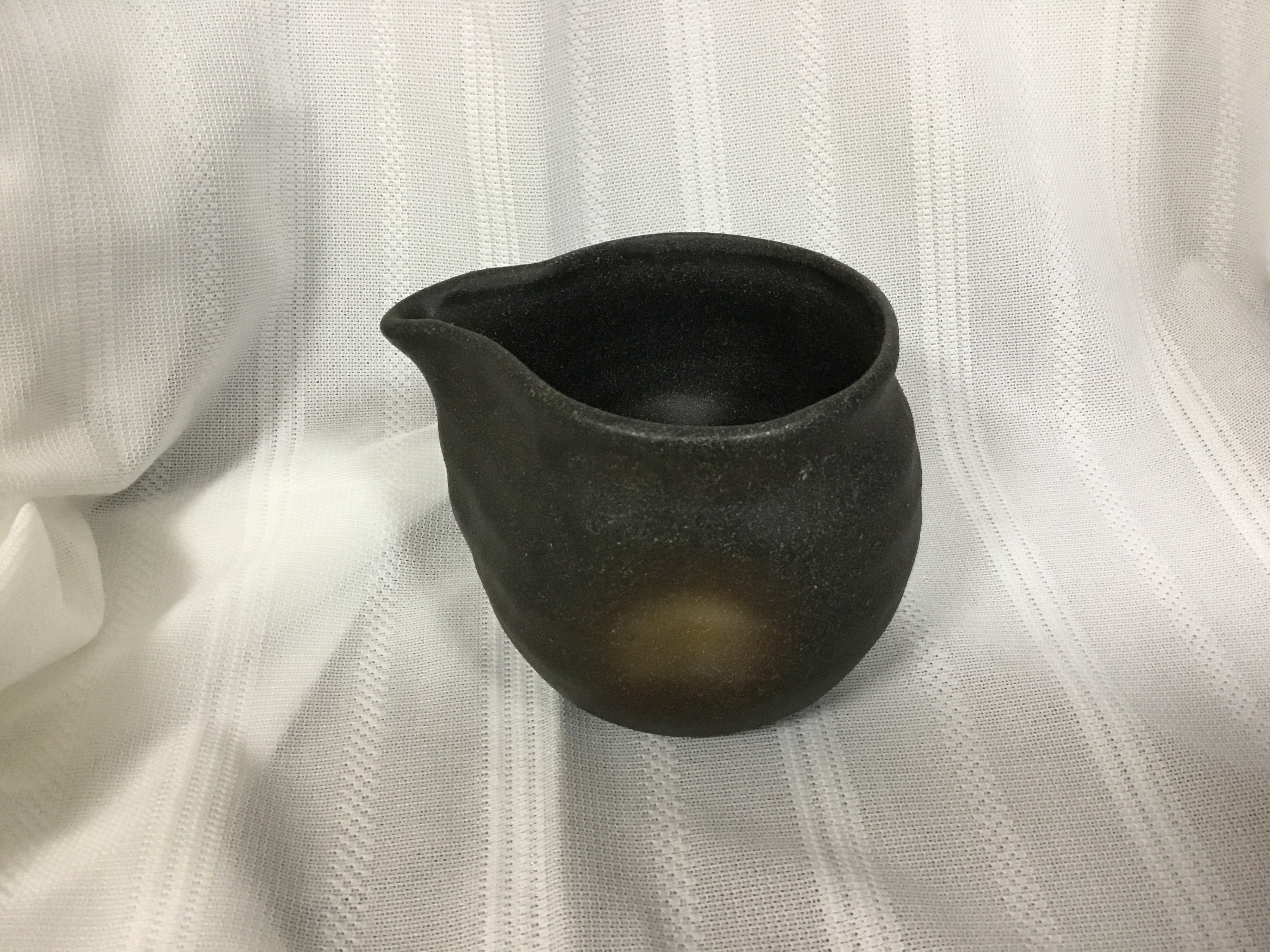
Katakuchi is a vessel in which the spout protrudes from the round part at the top of the vessel.
This name was given because the spout is on only one side (“kata” in Japanese).
When arranging the Sake device “to drink”, I looks so good and you can feel “Wa (Japanese)”. The effects is high.
However, due to its wide caliber, sake is more likely to oxidize and scent than Choshi and Tokkuri.
When using it, it is best not to put alcohol in Katakuchi for too long, depending on the pace of drinking.
Chirori
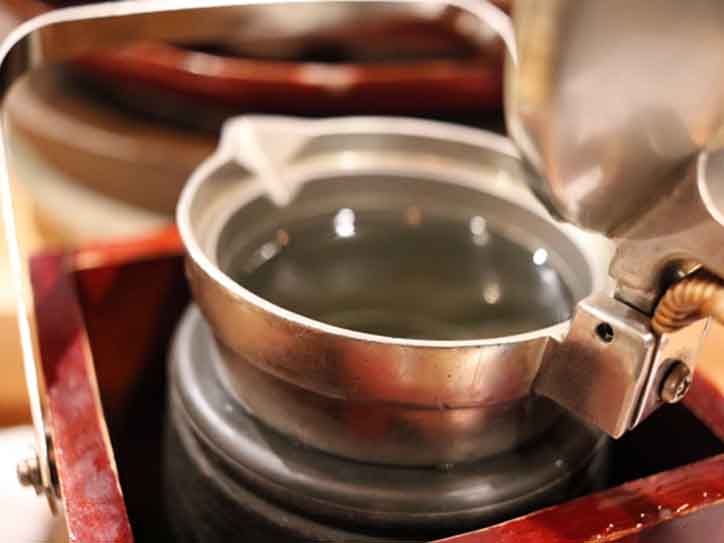
Chirori is a sake set made of metal and can be soaked in hot water together with the container.
It has existed since the Edo period, and there are copper, tin, and aluminum ones.
It seems that there is a theory that the name “Chirori”, which you are interested in, is “because it is heated in a ground furnace (Chiro, the hearth)” or “because it is warmed in a short time (“chirori” means “short”)”, but it is not clear.
Since there are similar sake sets in China, it is believed that they came from China.
4 points to choose the best sake set for drinking sake
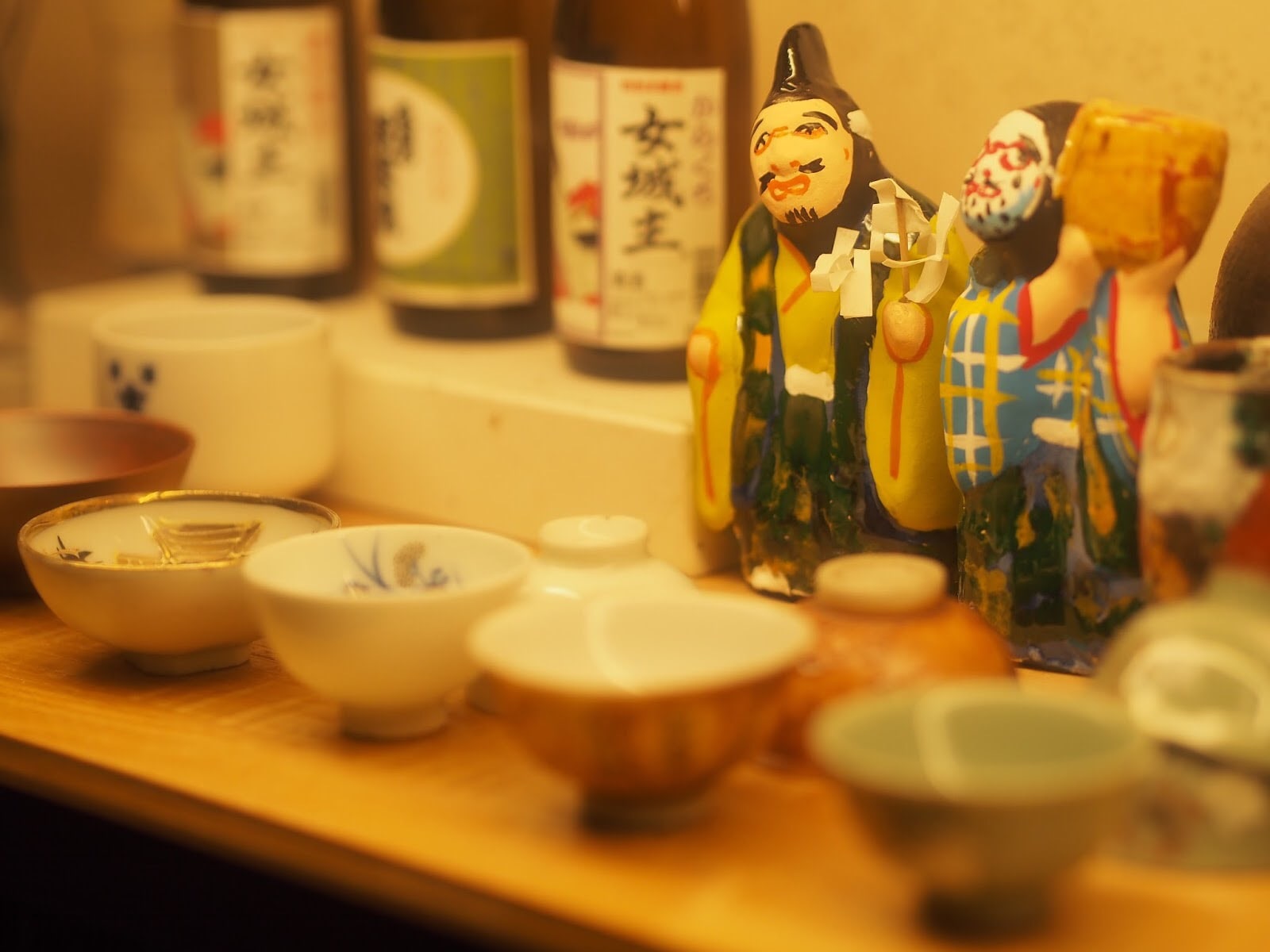
Finally, I would like to introduce four points for choosing the best sake set for drinking sake.
As I have introduced a little so far, the taste of sake differs depending on the sake set.
If you choose a sake set that suits the characteristics of sake, you will have more ways to enjoy sake, so it is good to know.
Select a material from shades
Most sake is colorless and transparent, but some types are yellow or brown.
When choosing a sake set, it is recommended to choose the material from these shades.
The colorless and transparent glass is suitable for sake sets made of any material.
If you want to create a more transparent feeling, a transparent glass with a cut is recommended.
If the color of the liquor is yellow or brown, the shade can be clearly communicated by using a transparent glass or white porcelain liquor.
On the other hand, if you use brown or black pottery, it will look dull, so be careful.
Also, sake containing solids such as nigori-sake is incompatible with transparent glasses.
This is because the solids stick to the glass after drinking and it looks bad.
When drinking nigori-sake, it is a good to use a sake set made of colored.
Select the shape considering the scent
How you feel the aroma of sake, depends on the shape of the sake set.
For example, a trumpet shape or a highly curved shape makes it easy to feel the scent.
The small and linear shape makes it difficult to smell the scent.
Therefore, it is recommended to use a trumpet-shaped or highly curved sake set for fragrant liquor, and a small, straight-shaped liquor for low-fragrance liquor.
Basically, the above selection method is recommended.
There is also a way to drink sake that has a low aroma and a trumpet shape or a highly curved shape to bring out the aroma.
Please try various things according to the characteristics of sake.
Select the size by temperature zone
Since the speed of temperature change of the sake poured into the sake set changes depending on the size of the sake set, the sake set may be selected according to the temperature range and the amount of sake poured into the sake set.
Cold sake can be poured into a small sake set to reduce the contact area with the outside air, thereby slowing the temperature rise.
You can also choose to use chilled glass, or use metals, tin, or titanium that have excellent thermal conductivity.
For warmed sake, it is best to use a small-caliber sake set to prevent heat from escaping.
If the material is also made of earthenware, the vessel will store heat and slow down the speed of temperature change.
On the other hand, normal temperature sake is not related to temperature, so there is no problem with a large sake set.
In this way, we can enjoy sake while suppressing temperature changes by changing the size of the sake set according to the temperature range of sake.
Select the size of the caliber from the taste
The shade of the taste of sake depends on the shape of the caliber (the part that touches the mouth).
A thin caliber emphasizes a smooth mouthpiece. On the contrary, if the caliber part is made thicker, the feeling of being heavy will increase.
Also, if the caliber is small, the feeling of lightness will increase, and if the caliber is large, the taste and richness will be emphasized.
Based on the above, the recommended sake sets are classified according to the type of sake as follows.
[Recommended sake set by sake type]
| Sake type | Suitable sake set shape | Example of sake set |
| Kunshu | Highly curved shape, shape that spreads toward the top | Burgundy wine glass, trumpet wine glass |
| Soushu | Nothing special | Choko, Kiriko※,Flute glass※
※When drinking chilled |
| Junshu | Thick and large caliber | Gui-nomi, Hirahai, wide caliber wine glass |
| Jukushu | Highly curved shape | Choko, Gui-nomi, brandy glass, sherry glass, shot glass |
Summary
I introduced the characteristics of typical sake set materials and how to choose them.
We use sake sets casually, but in reality, there are various materials.
In addition, since there is a feature for each material different, you have to when selecting the sake instrument, was introduced in this article, please try to reference the characteristics of each Liquor.
Also, when you drink sake, it is useful to know how to choose it according to the type of taste.
If you become familiar with sake in the series so far, be sure to remember the ingredients, characteristics, and selection of sake sets.
You can apply it to other alcoholic beverages, and you will feel a little familiar and enjoy drinking alcohol.
Next time is the 8th ” Taste the seasons! Introducing special types of sake in each season! ”
[References] SAKE SERVICE INSTITUTE(SSI), “MOTOI of NIHONSHU”, NPO FBO 2018It's our great pleasure if this article is helpful for you.
Restaurant Information
| Shop Name | |
|---|---|
| Prefectures | - |
| Tel | |
| Address | |
| Nearest Station | |
| Homepage | - |
| Business Hours | - |
| Holiday | |
| Introduction | |
| Sake List |
|

